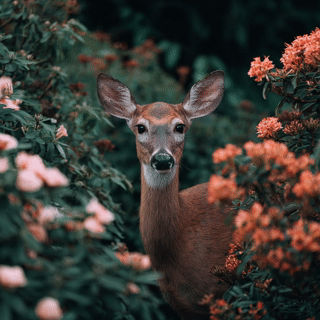How Degrading: The Importance of using All Natural Materials
- Horatio Wild Hog

- May 5
- 3 min read
When you make an animal repellent, it’s best to be as specific as possible. It should be a lot more like an arrow, and a lot less like an avalanche, and nothing like a nuclear bomb. I want to discourage this animal, from this place/activity, for this reason. I don’t want to take out an entire species. And I certainly don’t want to live in toxic radiation for thousands of years afterwards.
Using all-natural ingredients to formulate animal repellents seems to be a no-brainer. Natural ingredients, derived from plants, animals, and minerals, in thoughtfully safe concentrations, are generally gentle and non-toxic. Additionally, these ingredients are biodegradable and are a lot less likely to contaminate soil and water, as well as being less likely to create harm for pets and people.
Think of it as swimming with the current, as opposed to swimming against the current, with the current being a metaphor for all those natural forces and processes that make for a thriving environment.
So repellents have to do their job, and then magically disappear … like a genie.

Let’s take a couple common natural repellent ingredients and see what becomes of them:
Peppermint Oil: As opposed to humans, animals and insects don’t like peppermint very much. It’s a strong odor that messes with their delicate sense of smell, making them disoriented in their environment and less likely to sense danger as it approaches.
So you’ve applied peppermint and it has done its job and kept the “dragon” away. What becomes of it?
Some microbes actually like peppermint! They feast on it and break it down into simpler compounds and carbon dioxide. Sunlight causes chemical bonds within the oil to degrade and fragment. Water hydrolyzes the oils and components, further pulling things apart. Even some plants can take up peppermint oil and use them in their metabolic processes.
Coconut Hulls: Granular repellents sometimes use “carriers” for their more volatile ingredients to keep them around longer and to spread out their surface area on something material that can be strategically placed where it is needed to do its job.
Then what happens to the coconut hulls?
They break down through a combination of biological, physical, and chemical processes, of course.
Bacteria and fungi (in particular yeast) secrete enzymes that break down the pectins, polyphenols and hemicelluloses that bind the fibers together. Where water is present, a leaching occurs which further promotes a nutrient-rich environment for microbes. And physically, weathering and animals and people break the hulls into smaller and smaller pieces, further promoting leaching and a great environment for microbes.
Decyl Glucoside: Sounds scary, huh? It’s basically a combination of sucrose from corn starch, made to react with a fatty alcohol, decanol, which comes from coconuts. Decyl Glucoside is used as a surfactant.
What’s a surfactant? Glad you asked! It is a substance that makes things stick more easily to other things, or allows liquids to react together in ways that they normally would not be able to.
Decyl Glucoside is somewhat foamy and is used to break down protective oils. Think of it as insects getting their armor weakened.
What’s the breakdown? Enzymes called glucoside hydrolases cleave the bond between the glucose molecules and the decyl alcohol, breaking them into their separate components.
The decyl alcohol is further broken down by microbes in the air and soil, and the glucose is basically sugar, which lots of living things like to eat … me included.
There you have it. You put it together with the breakdown in mind. One minute it’s raw materials, the next minute it’s a substance specifically formulated for a grand purpose, and soon it’s back to being raw materials again. The genie is back in the bottle, waiting for the next formulation.





Comments